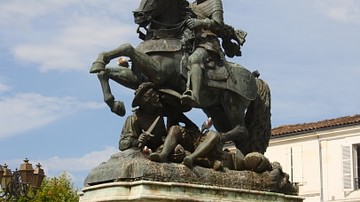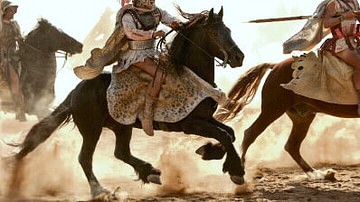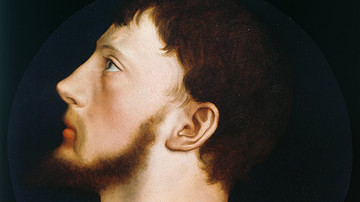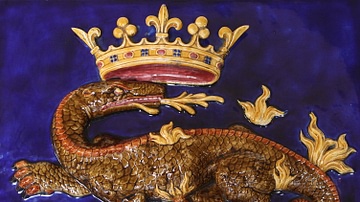Search
Search Results

Video
Lost Cities of the Ancient World - Interview With Author Philip Matyszak
What happened to the places that history forgot – the cities submerged under water, decimated by invading armies or swallowed up by the sands of time? Where are they, and what can they tell us about our past? From the sunken city of Thonis...

Video
A Day in the Life of an Ancient Celtic Druid - Philip Freeman
Join the Celtic druid Camma in her village as she conducts religious rites, serves as a healer, and mediates conflict between tribes. — As the sun rises in 55 BCE, Camma lays two pigeons on the altar at the center of her village. She...

Image
Statue of Francis I of France
A statue of Francis I of France (r. 1515-1547 CE) in Cognac, France. The French king was born in the town in 1494 CE.

Article
The Army of Alexander the Great
No military commander in history has ever won a battle by himself. To be successful he needs the support of a well-trained army who will follow him regardless of the cost whether it be a stunning victory or hopeless defeat. One need only...

Definition
Richard I of England
Richard I of England, also known as Richard the Lionheart (Cœur de Lion), reigned as king of England from 1189 to 1199. The son of Henry II of England (r. 1154-1189) and Eleanor of Aquitaine (c. 1122-1204), Richard was known for his courage...

Definition
Antipater (Macedonian General)
Antipater (c. 399-319 BCE) was a Macedonian statesman and loyal lieutenant of both Alexander the Great and his father Philip II of Macedon. As a regent in Alexander's absence, Antipater subdued rebellions and mollified uprisings, proving...

Definition
Wyatt Rebellion
The Wyatt Rebellion of January-February 1554 CE saw Sir Thomas Wyatt the Younger lead a group of several thousand Kent rebels in a march on London with the primary aim of preventing Mary I of England (r. 1553-1558 CE) from marrying Spain's...

Image
The Comte d'Artois, Later Charles X of France
Charles Philippe de France, comte d'Artois (1757-1836), during the French Revolution, oil on canvas painting by Henri-Pierre Danloux, 1798. As the youngest brother of King Louis XVI, Artois was one of the first emigres to flee France after...

Image
Crown & Salamander Symbol of Francis I of France
The crown and salamander symbol used by Francis I of France (r. 1515-1547 CE). From the Château d'Amboise, France.

Video
The Great Swamp Fight: The Bloodiest Day of King Philip's War
In December 1675 CE, in the midst of King Philip's War, an army of Puritan colonists made a preemptive strike against the neutral Narragansett tribe. Their desperate battle in the snowy wilderness of Rhode Island became a touchstone in the...